
the future of
NANOTECHNOLOGY, ECONOMY, ICT, PHILOSOPHY, URBAN DEVELOPMENT, EDUCATION, MEDICINE, FOOD, MOBILITY, MUSIC, INTERNET, ENERGY, MEDIA, RELIGION, BIOTECH, POLITICS, TECHNOLOGY, ENTERTAINMENT, KNOWLEDGE SOCIETY, ARCHITECTURE, LEARNING, SENIOR CITIZENS, DEMOCRACY, SCIENCE, CULTURE
Content
Welcome to the ClubofAmsterdam Journal.
A mobile version of the Club of Amsterdam Journal can be downloaded here mobile & printable version
s
The Future Now Show about Change with Humberto Schwab
“What coding is for the digital world is Socratic Design for the real world, we analyze and change our ecology of mind.”
Felix B Bopp, Founder & Chairman
Hydrogen Mobility

Introduction to Hydrogen Mobility (November 2018)
The H2ME initiative is a flagship European project, deploying hundreds of fuel cell hydrogen cars, vans and trucks and the associated refuelling infrastructure, across 8 countries in Europe.
It will create the first truly pan-European network, and the world’s largest network of hydrogen refuelling stations.
The project is being supported by the European Union through the Fuel Cells and Hydrogen Joint Undertaking (FCH 2 JU) but is driven by the continuous engagement of the industry.
This documents provides a summary of the project status,highlights key achievements and also suggests some of the emerging issues which need to be tackled by the fuel cell vehicle sector as it moves towards a commercially viable mass market proposition.
This is a living document that will be updated as the project progresses. It is intended to:
• Give first hand information to stakeholders, policy-makers etc.;
• Align H2ME partners on the common themes emerging from the early demonstration results;
• Serve as a basis for additional dissemination materials.
Please find the document here: H2ME_Emerging Conclusions _introduction H2 mobility
Hydrogen Europe
represents the European industry, national associations and research centers active in the hydrogen and fuel cell sector. The association partners with the European Commission in the innovation programme Fuel Cells and Hydrogen Joint Undertaking (FCH JU). We are promoting hydrogen as the enabler of a zero emission society.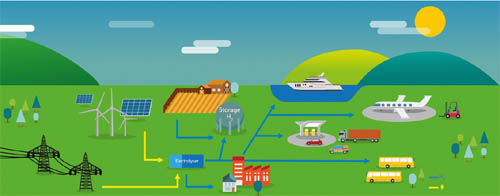
Resources
The Linde Group – Hydrogen – industrial gas and energy carrier
Hydrogen (H 2) has been deployed as an industrial gas for over one hundred years and large volumes are used across the widest range of applications every day. Hydrogen is also set to play a defining role in the much-publicised third, ‘green’ industrial revolution. It is the most commonly occurring element in nature and – unlike fossil fuels such as crude oil or natural gas – will never run out. Like electricity, hydrogen is an energy carrier – not a source of energy. It must therefore be produced. Yet hydrogen offers several key benefits that increase its potential to replace fossil fuels. Stored hydrogen, for example, can be used directly as a fuel or to generate electricity.
Hydrogen will open up regenerative, sustainable mobility choices in our everyday lives. Hydrogen-powered vehicles have a long-distance range and can be rapidly fuelled. Decades of research, development and testing have shown that hydrogen technology is a workable, economically viable alternative suited to mass deployment.
Nedstack – Fuel Cells
Nedstack is one of the leading PEM fuel cell producers in the world. Having well over a decade of stack manufacturing experience, our extensive track-record includes over 500 systems based on Nedstack fuel cells in commercial operation world-wide, several even dating back to 2006. Also, the world’s largest PEM fuel cell system is based on Nedstack fuel cell stacks. Our Fuel Cell stacks have proven a long lifetime capability and high energy efficiency in the field.
McPhy
“Supporting new ways of thinking about the production and consumption of energy, developing a mix based on renewable energies, more sustainable and anchored in the territories: this is the conviction that we share.
At the heart of this project, the hydrogen carrier plays a central role: for the storage of energy of course, but also to decarbonize transportation as well as deploy new industrial uses.
As a multi-applications energy carrier, hydrogen plays a key role in the world energy mutation.
It can be turned into clean fuel to charge the hydrogen vehicles, injected into the gas networks, used as a raw material for the industry, or as an energy storage solution to give the flexibility requested for the smart grids monitoring.
Pragma Industries
Pragma Industries has designed of a new fuel cell architecture suitable for high-throughput production. Additionally, the technology created and developed allows a two-fold manufacturing cost reduction and a 50% weight decrease.
Created in 2004 and located in Bidart (64), Pragma Industries offers efficient and competitive solutions for two target markets: Research/Education and Industry for portable and e-mobility applications. All these solutions are produced in France, in the company’s manufacturing facilities.
Pragma Industries has designed the first commercial-grade fuel cell Pedelec, alpha, integrating the OCS fuel cell
technology. alpha has been developed as a response of today’s energy demand and eco-mobility issues.
Hydrogen vs Electric : The Future of Automobiles
Oppemheim Architecture
Oppenheim Architecture has coated a water treatment plant in Muttenz, Switzerland, in a mixture of stone and clay, to create a building reminiscent of a natural rock form eroded by flowing water. The architecture studio designed the building to elevate what would usually be a private building into a landmark for the nearby town that would draw visitors into educational gallery spaces. US- and Switzerland-based Oppenheim Architecture created the treatment facility for the Muttenz municipality to blend demanding technological needs with a sense of openness, all while respecting the protected woodland next to the site.
Source: Dezeen
Swiss water-treatment plant to resemble a natural rock
The Future Now Show

Shape the future now, where near-future impact counts and visions and strategies for preferred futures start. – Club of Amsterdam
Do we rise above global challenges? Or do we succumb to them? The Future Now Show explores how we can shape our future now – where near-future impact counts. We showcase strategies and solutions that create futures that work.
Every month we roam through current events, discoveries, and challenges – sparking discussion about the connection between today and the futures we’re making – and what we need, from strategy to vision – to make the best ones.
February 2019
Change
with
Humberto Schwab
moderated by
Marleen Stikker
What coding is for the digital world is Socratic Design for the real world, we analyze and change our ecology of mind.
The Future Now Show
Credits
Humberto Schwab, Socratic Design Academy
socraticdesignacademy.com
Club of Amsterdam
www.clubofamsterdam.com
Orquesta de Instrumentos Reciclados de Cateura
The Recycled Orchestra of Cateura(Spanish: Orquesta de Instrumentos Reciclados de Cateura), also known as the Recycled Orchestra, is an orchestra composed of children from Asunción, Paraguay who play musical instruments made from scrap materials collected from Asunción’s Cateura landfill. Formed in 2012, the orchestra has performed internationally with Stevie Wonder and the American heavy-metal bands Metallica and Megadeth.
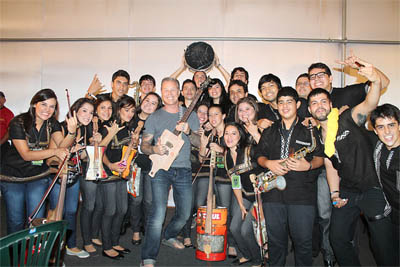
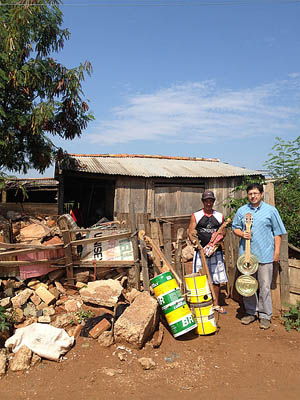
News about the Future
The Climate Action Tracker (CAT)
is an independent scientific analysis produced by three research organisations tracking climate action since 2009. We track progress towards the globally agreed aim of holding warming well below 2°C, and pursuing efforts to limit warming to 1.5°C.
CAT quantifies and evaluates climate change mitigation commitments, and assesses, whether countries are on track to meeting those. It then aggregates country action to the global level, determining likely temperature increase by the end of the century. CAT also develops sectoral analysis to illustrate required pathways for meeting the global temperature goals.
Orkney – an island with sustainable energy
“A secure, sustainable low carbon island economy driven uniquely by innovation and collaboration, enabling the community to achieve ambitious carbon reduction targets, address fuel poverty and provide energy systems solutions to the world.”
In 2013, Orkney produced 103% of its total electricity needs through renewable energy sources upping this figure to 104% in 2014. At first glance, it might seem remarkable that a small group of islands lies at the cutting edge of renewable energy development and implementation in the UK. Perhaps the clue that explains why Orkney is playing a world leading role in the adoption and development of renewables lies in the word “islands”. Standing between the Atlantic and the North Sea, Orkney is home to some of the most energy-rich waters in Europe, some of the strongest winds, and a community that have embraced the potential of the islands with open arms.
How we’re designing musical instruments with the help of disabled musicians and VR

by Franziska Schroeder, Senior lecturer, School of Creative Arts, Queen’s University Belfast

and
Matilde Meireles, Postdoctoral Research Fellow, Sonic Arts Research Centre, School of Arts, Queen’s University Belfast
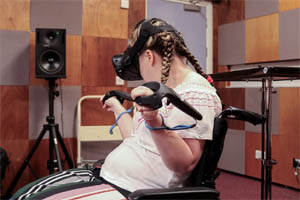
Virtual Reality technology opens up new experiences and possibilities in music for people with disabilities. Performance Without Barriers, Author provided
Most new digital technologies tend to be designed with an able-bodied user in mind. The first desktop computers required fine motor skills to navigate software menus using a mouse, and mobile phones need users to press buttons, swipe screens, and so on. To use such technology a person needs to be fairly dexterous.
In our Performance without Barriers research group, we design digital musical interfaces with disabled musicians in mind. This work engages disabled performers from the start of a new technology and looks at the specific abilities they have. In this way, technologies develop in tandem with them, taking into account their mobility, needs and creative interests.
Current VR technology is designed for the able bodied, but more importantly it often allows only for passive interactions – listening to music performances, such as Elton John’s 360 concert, for example, or “riding” a rollercoaster. We were more interested in how disabled musicians can use VR technologies in an active and performative way.
Working together
Our research team consists of a diverse group, including electronic engineers, computer scientists, sonic arts researchers, immersive content designers, a soloist ensemble and a local group that helps disabled musicians perform and compose their own music independently. Together with these musicians, we teamed up with a US software developer, who was designing a VR musical instrument called the “Infinite Instrument”, running on a 360° VR headset called HTC VIVE.
The instrument was developed with able-bodied musicians in mind, so we designed it to take into account different types of mobilities. This led to one of our musicians with cerebral palsy playing a new VR instrument that was specifically designed to take into account her expressive upper body movements. It did not require her to use fine motor precision in her arms or fingers, which she does not possess.
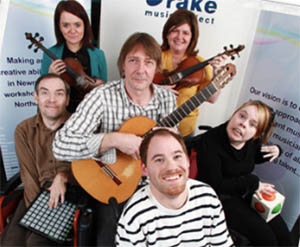
Drake Music NI, a charity that helps people with disability perform their own music. Drake Music, Author provided (No reuse)
VR headsets are necessarily about what you see. However, we found that the tactile feedback from the hand-held controllers – through which a user accesses a menu and press commands to reach content – allowed this particular musician to play the instrument by feeling and hearing it, rather than seeing it through the headset. Not having to rely on the headset also meant she could maintain visual contact with other musicians during the performance.
Another example of our collaborative VR design was working with a blind performer. Key to this musician were his virtuosic skills on the clarinet. The idea was to build on his expertise and adapt and enhance his musical performance skills using VR technologies.
VR experiences are so concentrated on the visual experience that often they disregard the inherently immersive nature of sound, but it’s all around us, a proper 360° experience. Clearly, a visual headset was not relevant or helpful to this blind musician. We needed to focus on how we could use the other immersive qualities of a space for a music performance.
Our team is based at the Sonic LAB in Queen’s, an immersive and fully customisable 3D sound space – often referred to as the iMAX for the ears – we decided to adapt the VIVE technology to this existing context.
For our clarinettist we focused on the VIVE controllers, as they are more tactile than visual. They can also track physical positions in a space, which meant the clarinettist was able to position sounds in the 3D Sonic LAB by having the VIVE controller strapped to his instrument.
Inclusive thinking and design
These bespoke VR instrument designs featured in a showcase concert in November 2018, where disabled musicians performed alongside musicians from the Hard Rain Soloist Ensemble.
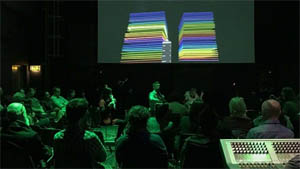
Showcase performance that brought together musicians of different abilities. PwB, Author provided
The audience was positioned in a circle closely surrounding the musicians in order to enhance the immersive experience of the performance space.
The disability equipment market worldwide is estimated to increase to more than US$8 billion by 2020, and sales of disabled equipment in the UK have increased over 93% over the last ten years. All technologies, including VR, can be inclusive if the perspective of disabled people is part of their design.
Our approach reveals how new technologies can be developed, that actively engage disabled musicians in music making and demonstrate a commitment to quality of life for disabled musicians. We will continue to design instruments that can be used in VR, but we will now focus on using more affordable systems, with a view to creating a virtual reality ensemble of disabled and able-bodied musicians.
This article is republished from The Conversation under a Creative Commons license.
Recommended Book

Limitless Biohacking: Gain An Unfair Advantage
by Conrad SmithLimitless Biohacking is the second half of a journey you have already started. If you’re reading this sentence, something in your life has compelled you to want to become more. You’re researching books to read, looking for the one with the answer… But as most people in your position soon find out, no matter how many books you read, there will be a point where you can no longer progress. The only way to continue to grow is by supplementing your very biology. Yes, true growth comes from without – not within. The biohacks in this book have the ability to actually change your life. The impact that the right supplement can have at the right time in your life is immeasurable. It could help to you gain the advantage in your school, workplace, sport, relationships… But only if you know which supplements to take. Limitless Biohacking will help you find the perfect supplement stack for your individual needs… Limitless Biohacking will show you the science behind nootropics that Big Pharma doesn’t want you to see… Limitless Biohacking will teach you how to make healthy supplementation part of your life, long term… As J.P Morgan once said: “The first step towards getting somewhere is to decide that you are not going to stay where you are.” You’re going places, and this book is your first step.
Brain-Computer Interface
By Columbia, Zuckerman Institute
Columbia Engineers Translate Brain Signals Directly into Speech – Advance marks critical step toward brain-computer interfaces that hold immense promise for those with limited or no ability to speak.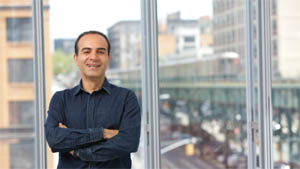
Nima Mesgarani, PhD, Associate Professor of Electrical Engineering; Principal Investigator at Columbia’s Zuckerman Institute
Credit: John Abbott
In a scientific first, Columbia neuroengineers have created a system that translates thought into intelligible, recognizable speech. By monitoring someone’s brain activity, the technology can reconstruct the words a person hears with unprecedented clarity. This breakthrough, which harnesses the power of speech synthesizers and artificial intelligence, could lead to new ways for computers to communicate directly with the brain. It also lays the groundwork for helping people who cannot speak, such as those living with amyotrophic lateral sclerosis (ALS) or recovering from stroke, regain their ability to communicate with the outside world.
“Our voices help connect us to our friends, family and the world around us, which is why losing the power of one’s voice due to injury or disease is so devastating,” said Nima Mesgarani, PhD, the paper’s senior author and a principal investigator at Columbia University’s Mortimer B. Zuckerman Mind Brain Behavior Institute. “With today’s study, we have a potential way to restore that power. We’ve shown that, with the right technology, these people’s thoughts could be decoded and understood by any listener.”
“This would be a game changer. It would give anyone who has lost their ability to speak, whether through injury or disease, the renewed chance to connect to the world around them.”
Decades of research has shown that when people speak — or even imagine speaking — telltale patterns of activity appear in their brain. Distinct (but recognizable) pattern of signals also emerge when we listen to someone speak, or imagine listening. Experts, trying to record and decode these patterns, see a future in which thoughts need not remain hidden inside the brain — but instead could be translated into verbal speech at will.
But accomplishing this feat has proven challenging. Early efforts to decode brain signals by Dr. Mesgarani and others focused on simple computer models that analyzed spectrograms, which are visual representations of sound frequencies.
But because this approach has failed to produce anything resembling intelligible speech, Dr. Mesgarani and his team, including the paper’s first author Hassan Akbari, turned instead to a vocoder, a computer algorithm that can synthesize speech after being trained on recordings of people talking.
“This is the same technology used by Amazon Echo and Apple Siri to give verbal responses to our questions,” said Dr. Mesgarani, who is also an associate professor of electrical engineering at Columbia Engineering.
To teach the vocoder to interpret to brain activity, Dr. Mesgarani teamed up with Ashesh Dinesh Mehta, MD, PhD, a neurosurgeon at Northwell Health Physician Partners Neuroscience Institute and co-author of today’s paper. Dr. Mehta treats epilepsy patients, some of whom must undergo regular surgeries.
“Working with Dr. Mehta, we asked epilepsy patients already undergoing brain surgery to listen to sentences spoken by different people, while we measured patterns of brain activity,” said Dr. Mesgarani. “These neural patterns trained the vocoder.”
Next, the researchers asked those same patients to listen to speakers reciting digits between 0 to 9, while recording brain signals that could then be run through the vocoder. The sound produced by the vocoder in response to those signals was analyzed and cleaned up by neural networks, a type of artificial intelligence that mimics the structure of neurons in the biological brain.
The end result was a robotic-sounding voice reciting a sequence of numbers. To test the accuracy of the recording, Dr. Mesgarani and his team tasked individuals to listen to the recording and report what they heard.
“We found that people could understand and repeat the sounds about 75% of the time, which is well above and beyond any previous attempts,” said Dr. Mesgarani. The improvement in intelligibility was especially evident when comparing the new recordings to the earlier, spectrogram-based attempts. “The sensitive vocoder and powerful neural networks represented the sounds the patients had originally listened to with surprising accuracy.”
Dr. Mesgarani and his team plan to test more complicated words and sentences next, and they want to run the same tests on brain signals emitted when a person speaks or imagines speaking. Ultimately, they hope their system could be part of an implant, similar to those worn by some epilepsy patients, that translates the wearer’s thoughts directly into words.
“In this scenario, if the wearer thinks ‘I need a glass of water,’ our system could take the brain signals generated by that thought, and turn them into synthesized, verbal speech,” said Dr. Mesgarani. “This would be a game changer. It would give anyone who has lost their ability to speak, whether through injury or disease, the renewed chance to connect to the world around them.”
David Suzuki Foundation
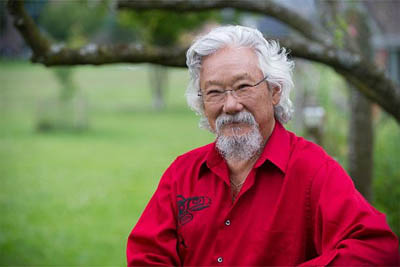
David Takayoshi Suzuki CC OBC FRSC (born March 24, 1936) is a Canadian academic, science broadcaster and environmental activist. Suzuki earned a Ph.D. in zoology from the University of Chicago in 1961, and was a professor in the genetics department at the University of British Columbia from 1963 until his retirement in 2001. Since the mid-1970s, Suzuki has been known for his television and radio series, documentaries and books about nature and the environment.
A longtime activist to reverse global climate change, Suzuki co-founded the David Suzuki Foundation in 1990, to work “to find ways for society to live in balance with the natural world that does sustain us”. The Foundation’s priorities are: oceans and sustainable fishing, climate change and clean energy, sustainability, and Suzuki’s Nature Challenge. The Foundation also works on ways to help protect the oceans from large oil spills such as the oil spill in the Gulf of Mexico. Suzuki has also served as a director of the Canadian Civil Liberties Association from 1982 to 1987. – Wikipedia
“We are interconnected with nature, and with each other. What we do to the planet and its living creatures, we do to ourselves.
This is the fundamental truth guiding our work at the David Suzuki Foundation.
Founded in 1990, the David Suzuki Foundation is a national, bilingual non-profit organization headquartered in Vancouver, with offices in Toronto and Montreal.
Through evidence-based research, education and policy analysis, we work to conserve and protect the natural environment, and help create a sustainable Canada. We regularly collaborate with non-profit and community organizations, all levels of government, businesses and individuals.”
David Suzuki Foundation: One Nature
Futurist Portrait: Richard Buckminster Fuller
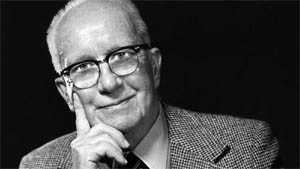
Richard Buckminster Fuller ( July 12, 1895 – July 1, 1983) was an American architect, systems theorist, author, designer, inventor and futurist.
Fuller published more than 30 books, coining or popularizing terms such as “Spaceship Earth”, “Dymaxion” house/car, ephemeralization, synergetic, and “tensegrity”. He also developed numerous inventions, mainly architectural designs, and popularized the widely known geodesic dome. Carbon molecules known as fullerenes were later named by scientists for their structural and mathematical resemblance to geodesic spheres.
Fuller was the second World President of Mensa from 1974 to 1983.
“You never change things by fighting the existing reality.
To change something, build a new model that makes the existing model obsolete.”
“There will come a time when the proper education of children, by a glorified system of spontaneous education of choice, similar to the Montessori System, will be made possible. Children, as well as grown-ups, in their individual, glorified, drudgery-proof homes of Labrador, the tropics, the Orient, or where you will, to which they can pass with pleasure and expedition by means of ever-improving transportation, will be able to tune in their television and radio to the moving picture lecture of, let us say, President Lowell of Harvard; the professor of Mathematics of Oxford; of the doctor of Indian antiquities of Delhi, etc. Education by choice, with its marvelous motivating psychology of desire for truth, will make life ever cleaner and happier, more rhythmical and artistic.”
“Nature never “fails.” Nature complies with its own laws. Nature is the law. When Man lacks understanding of Nature’s laws and a Man-contrived structure buckles unexpectedly, it does not fail. It only demonstrates that Man did not understand Nature’s laws and behaviors. Nothing failed. Man’s knowledge or estimating was inadequate.”
“The youth of humanity all around our planet are intuitively revolting from all sovereignties and political ideologies. The youth of Earth are moving intuitively toward an utterly classless, raceless, omnicooperative, omniworld humanity. Children freed of the ignorantly founded educational traditions and exposed only to their spontaneously summoned, computer-stored and -distributed outflow of reliable-opinion-purged, experimentally verified data, shall indeed lead society to its happy egress from all misinformedly conceived, fearfully and legally imposed, and physically enforced customs of yesterday. They can lead all humanity into omnisuccessful survival as well as entrance into an utterly new era of human experience in an as-yet and ever-will-be fundamentally mysterious Universe.”
In 3 minutes
Thinking Out Loud (documentary 1996)





Customer Reviews
Thanks for submitting your comment!